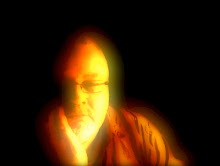Is this the name
For the handful of dirt
And do you even name
Air or weather, your own face
Looking through one
As you breathe the other?
What do you call geology
And its scoured landscapes
Or the sea whose clouds rise
With rain to fill the lochans
And the small, secret burns
Running stone-deep and gullied
Back to the sea again?
And whose story should we tell
In dark winter or simmer dim?
What name is your name
For our history and those
Whose names are spoken in it,
Spoken of, spoken for, spoken
By every lip and tongue.
Which of them echo most
In the moss-bearded forest
Or in wild and uncommon grazings,
Mute with the grass still growing?
Too many words have run
Like burn-water, a caochan of sound
In the field margins; too many words
For one story alone to be the one story:
All our twisting tales tell themselves
Ear to ear and build the greater book
Of our longing and belonging.
Nation?
What name can I say?
How could I add some -ism to the end of it
And invent some faction of me and mine
Where you and yours have no place?
I could never say,
This ground belongs to me,
No more than I could say,
The air is mine as I breathe it in;
And mine again as I breathe it out.
© BH, 2018
I’ll let it speak for itself. Nation. The question mark is for the vexed question of nationhood. Make of it what you will…
Just for good measure, though, you may think the symbolism in the illustration apparently Scottish. That’s as may be. And the faded map of Culloden field superimposed on the rock might seem to support it.
But the other elements were photographed in the USA, in Indiana, as it happens: the crossed contrails mimicking a saltire, the rock with the pine tree growing. In fact, that last shot was in a huge, disused limestone quarry in Bloomington, IN.
Nationhood. Sense of place. Could be just about anywhere.
Now there's 'Nationheid?' the same conundrum in Scots.
Now there's 'Nationheid?' the same conundrum in Scots.


No comments:
Post a Comment